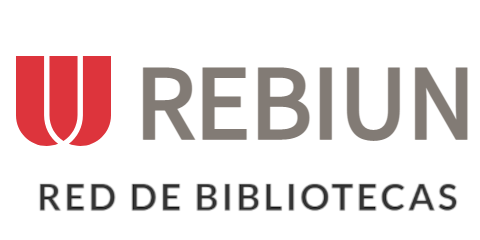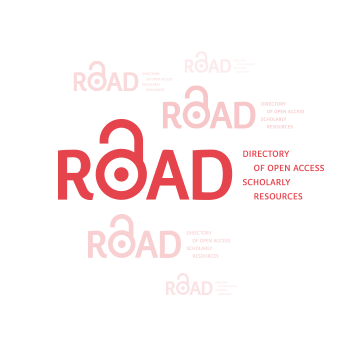The Influence of Cultural Context on English Teaching.
Resumen
As English continues to assert its dominance as a global language, the incorporation of cultural context into English Language Teaching (ELT) emerges as a paramount consideration. This literature review synthesizes scholarly work to investigate the multifaceted relationship between cultural context and ELT. Methodologically, this study involved an extensive review of empirical and theoretical literature published in the past five years. The analytical categories employed include Cultural Integration, Cultural Intelligence, English as an International Language (EIL) and English as a Lingua Franca (ELF), Culturally Responsive Assessment, Learners’ Identities, Language Policies, Context-Specific Methodologies, Intercultural Communication, Technology in Cultural Exposure, and Challenges in Culturally Responsive ELT. Findings indicate that cultural context significantly influences ELT processes and outcomes. Culturally responsive teaching practices, curricula, assessments, and policies are vital in preparing learners to become effective communicators and global citizens. Moreover, technology is identified as a facilitator for cultural exposure and exchange. The review concludes with recommendations for culturally responsive ELT practices and policies and calls for further research in underrepresented regions.
Descargas
Citas
Al-Hoorie, A. H. (2017). The L2 motivational self system: A meta-analysis. Studies in Second Language Learning and Teaching, 7(4), 573-599.
Ang, S., Van Dyne, L., & Livermore, D. (2010). Cultural intelligence: A pathway for leading in a rapidly globalizing world. In K. M. Hannum, B. B. McFeeters, & L. Booysen (Eds.), Leading across differences (pp. 131-138). Pfeiffer.
Baker, W. (2011). Intercultural awareness: Modelling an understanding of cultures in intercultural communication through English as a lingua franca. Language and Intercultural Communication, 11(3), 197-214.
Byram, M. (1997). Teaching and assessing intercultural communicative competence. Multilingual Matters.
Byrd Clark, J., & Dervin, F. (Eds.). (2014). Reflexivity in language and intercultural education: Rethinking multilingualism and interculturality. Routledge.
Canagarajah, S. (2006). Negotiating the local in English as a lingua franca. Annual Review of Applied Linguistics, 26, 197-218.
Çelik, S., & Storme, M. (2020). Developing cultural intelligence in language teacher education: A cultural diary approach. ELT Journal, 74(2), 151-161.
Corbett, J. (2003). An intercultural approach to English language teaching. Multilingual Matters.
Cortazzi, M., & Jin, L. (1999). Cultural mirrors: Materials and methods in the EFL classroom. In E. Hinkel (Ed.), Culture in second language teaching and learning (pp. 196-219). Cambridge University Press.
De Jong, E. J., & Harper, C. A. (2005). Preparing mainstream teachers for English-language learners: Is being a good teacher good enough? Teacher Education and Special Education, 28(3), 250-263.
Dörnyei, Z. (1994). Motivation and motivating in the foreign language classroom. The Modern Language Journal, 78(3), 273-284.
Earley, P. C., & Ang, S. (2003). Cultural intelligence: Individual interactions across cultures. Stanford University Press.
García Sánchez, M., & Araújo Neves, N. (2020). Empowering students’ voices: Dialogic literary gatherings and heritage education. Journal of Cultural Heritage, 43, 266-272.
Gay, G. (2010). Culturally responsive teaching: Theory, research, and practice. Teachers College Press.
Gutiérrez Almarza, G., & Madrid Fernandez, D. (2019). CLIL and cooperative learning: Creation of knowledge and the development of thinking and leadership abilities. Encuentro Journal of Research and Innovation in the Language Classroom, 28, 37-52.
Holliday, A. (1994). Appropriate methodology and social context. Cambridge University Press.
Hornberger, N. (2006). Frameworks and models in language policy and planning. In T. Ricento (Ed.), An introduction to language policy: Theory and method (pp. 24-41). Blackwell Publishing.
Jenkins, J. (2015). Global Englishes: A resource book for students. Routledge.
Kachru, B. B. (1986). The alchemy of English: The spread, functions, and models of non-native Englishes. University of Illinois Press.
Kasper, G., & Rose, K. R. (2002). Pragmatic development in a second language. Wiley-Blackwell.
Liddicoat, A. J., & Scarino, A. (2013). Intercultural language teaching and learning. Wiley-Blackwell.
Lopez Rodriguez, C. I., & Casal Madinabeitia, S. (2021). A multimodal critical discourse analysis of identity and social class in four EFL textbooks. Critical Arts, 35(1), 47-61.
Lotherington, H., & Jenson, J. (2011). Teaching multimodal and digital literacy in L2 settings: New literacies, new basics, new pedagogies. Annual Review of Applied Linguistics, 31, 226-246.
Maldonado García, M., & Pino Juste, M. (2019). Inclusive and critical citizenship in bilingual education. International Journal of Inclusive Education, 23(7-8), 765-780.
Morón Martín, M., & Rubio Alcalá, F. D. (2019). Attitudes and motivation in early foreign language learning. International Journal of English Studies, 19(1), 73-94.
Norton, B. (2013). Identity and language learning: Extending the conversation. Multilingual Matters.
Pérez Cañado, M. L. (2012). CLIL research in Europe: Past, present, and future. International Journal of Bilingual Education and Bilingualism, 15(3), 315-341.
Risager, K. (2007). Language and culture pedagogy: From a national to a transnational paradigm. Multilingual Matters.
Rojas Gutierrez, N., & Hidalgo McCormick, C. (2021). Inductive teaching of pragmatic routines in the EFL classroom: Implementation and outcomes. ELT Journal, 75(2), 173-182.
Ruiz de Zarobe, Y., & Zenotz, V. (2015). Reading strategies and CLIL: The effect of training in formal instruction. Revista Española de Lingüística Aplicada/Spanish Journal of Applied Linguistics, 28(1), 196-218.
Seidlhofer, B. (2011). Understanding English as a lingua franca. Oxford University Press.
Sercu, L. (2004). Assessing intercultural competence: A framework for systematic test development in foreign language education and beyond. Intercultural Education, 15(1), 73-89.
Sharifian, F. (2009). English as an international language: Perspectives and pedagogical issues. Multilingual Matters.
Skopinskaja, L. (2003). The role of culture in foreign language teaching materials: An evaluation from an intercultural perspective. In Intercultural experience and education, 39-58.
Taguchi, N. (2015). Instructed pragmatics at a glance: Where instructional studies were, are, and should be going. Language Teaching, 48(1), 109-128.
Tomalin, B. (2018). English as a global language: Challenges for teachers and learners. Profile: Issues in Teachers' Professional Development, 20(1), 209-212.
Vez, J. M., & Porta , L. (2018). The integration of content and language in the secondary school education: Different contexts, similar challenges. International Journal of Bilingual Education and Bilingualism, 21(6), 666-678.
Wang, C., & Murphy, J. (2015). Culture teaching in foreign language teaching: A study of current practices. Theory and Practice in Language Studies, 5(11), 2257-2263.
Young, T. J., & Sachdev, I. (2011). Intercultural communicative competence: Exploring English language teachers' beliefs and practices. Language Awareness, 20(2), 81-98.
Zuengler, J., & Miller, E. R. (2006). Cognitive and sociocultural perspectives: Two parallel SLA worlds? TESOL Quarterly, 40(1), 35-58.
Derechos de autor 2023 Gilmer Javier Ordóñez Procel ;Manuel Alejandro Poma Tacuri;Katherine Alexandra López López;Pablo Israel Correa Criollo

Esta obra está bajo licencia internacional Creative Commons Reconocimiento 4.0.












.png)




















.png)
1.png)


